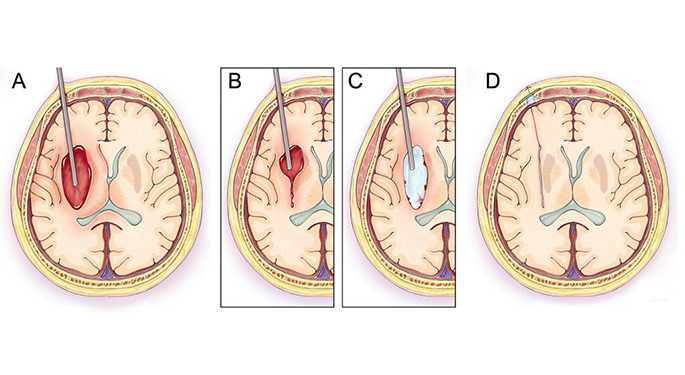
Atherosclerosis and Ischemic Stroke
An ischemic stroke occurs when the arteries that bring blood to the brain or operate within your brain become narrowed or blocked. Just as heart attacks are caused by insufficient blood and oxygen flow to the heart, ischemic strokes happen when the brain does not get enough blood and oxygen. Stroke is also known as a cerebral vascular accident.
Most ischemic strokes are caused by atherosclerosis, which is also called hardening of the arteries. Atherosclerosis happens when fat and cholesterol build up in your arteries, or blood vessels, causing your arteries to narrow. Over time, this can completely block blood flow. Other causes of ischemic stroke are stenosis (extracranial or intracranial), thrombosis, and embolism.
Symptoms
Ischemic stroke often has no symptoms. In some cases, you can have temporary stroke-like events called transient ischemic attacks.
Developed by the American Heart Association, the mnemonic BE FAST lists the symptoms of stroke:
Balance: Sudden loss of balance
Eyes: Sudden loss of vision in one or both eyes
Face: Uneven appearance
Arm: One arm drifting down
Speech: Speech sounds strange, especially when repeating a phrase
Time: Every second brain cells die. Call 911 immediately.
Treatment Options
Time is extremely important in stroke treatment. On average, two million neurons die every minute during a stroke. Various treatments are possible depending on how long the stroke has been occurring. If a stroke is less than four and a half hours old, you may be eligible to receive tissue plasminogen-activator. If your symptoms are less than six hours old, you may be eligible to undergo a procedure called mechanical thrombectomy, during which we place a catheter in the femoral artery in your groin, move the catheter to the clot in artery in your brain, and pull the clot out (aspirate).
We treat ischemic stroke by doing one or more of the following procedures:
- Intravenous tissue plasminogen activator (tPA) can be effective if we are able to treat you within four and a half hours from when you first experience symptoms. We provide tPA directly into your veins in an emergency room.
- Mechanical thrombectomy can be helpful up to six hours after the onset of stroke symptoms. It is possible to have the procedure after that within a clinical trial, which Mount Sinai is running.
- Antiplatelet and anticoagulation medications
- Intra-arterial (within your arteries)
- Balloon angioplasty
- Extracranial (outside the head) and intracranial (inside the head) stenting
- Bypass surgery
- Medications by pill to reduce blood pressure, prevent embolism
- Medication administered intravenously (into your veins) to break up blood clots, restore blood flow, and save the brain
We may also recommend lifestyle changes, such as quitting smoking, watching your diet, and increasing exercise. If a stroke has left you unable to do what you used to do, we may suggest physical therapy and stroke rehabilitation.
Clinical Trials
Mount Sinai is the main site for multiple clinical trials evaluating new stroke treatments for patients ineligible for tPA or thrombectomy within six hours. If you have any questions if you or a family member may be a candidate, contact us immediately at 212-241-3400.
Vagus Nerve Stimulation for Stroke Rehabilitation
After experiencing a stroke, many survivors continue to suffer from persistent impaired upper limb function and weakness. Vagus Nerve Stimulation (VNS) electrical pulses release neuromodulators in the brain that create or strengthen neural connections to enhance the relevance of physical therapy and improve upper limb function. “Pairing VNS with rehabilitation helps stroke survivors regain their independence and improve their quality of life, months or even years after suffering from a stroke,” says cerebrovascular neurosurgeon Christopher Kellner, MD Co-Founder of the Enhanced Stroke Recovery Program. More information about paired vagus nerve stimulation for stroke rehabilitation.